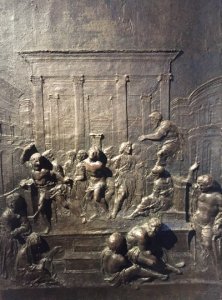The Controversy of Anti-Mimesis in Quattrocento Sculpture
Abstract
In sculpture, abraded, textured, or otherwise worked surfaces allow the art object’s facture or production to be visible to the observer, necessarily disrupting the artwork’s mimetic potential. Although this approach is traditionally considered the domain of avant garde art movements of the nineteenth- and twentieth-centuries rather than the Renaissance, several dozen fifteenth-century Italian sculptures – by artists like Donatello, Bertoldo, and Pollaiuolo – utilize what I refer to as a rough aesthetic, selectively abjuring mimesis by intentionally leaving toolmarks visible in their bronzes in a way that called attention to the artists’ own hands, suggesting a burgeoning interest in the creative process as a subject of art. However excitingly prescient of modernism’s “antimimetic attitude” this style is, I seek to demonstrate that these works were deeply controversial in their own time by considering previously overlooked evidence and possible negative interpretations of the sculptures. By examining both the purpose of anti-mimesis in quattrocento sculpture and why it was criticized, I hope to shed light on an early instantiation of a debate that has continued for centuries.

Downloads
Pubblicato
Come citare
Fascicolo
Sezione
Licenza
Copyright (c) 2023 Elephant & Castle

TQuesto lavoro è fornito con la licenza Creative Commons Attribuzione 4.0 Internazionale.





